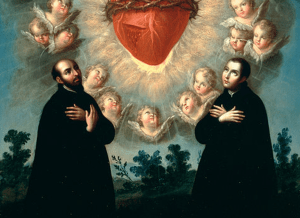
Valentine’s Day has come and gone once again, but throughout the year hearts are everywhere, from signs, holiday cards, text emojis, to bumper stickers saying “I heart my Beagle”. Most people know that it symbolizes love, but the history behind it goes much deeper. If we are willing to dig down that rabbit hole we will find there is much to be discovered.
The heart shape is a symbol all over the world of love, romance, and affection, but its origins go back to ancient times. There are many theories on the true beginnings of this iconic pictogram. Some say it derived from the shape of ivy leaves that represent fidelity, while others suggest it is associated with parts of the anatomy.
One of the most unique theories is with Silphium, a species of giant fennel that is heart-shaped and once grew on the North African coastline near the Greek colony of Cyrene. It was used as a food flavoring, cough syrup, and is most known for being a birth control by the ancient Greeks, and Romans. Cyrene grew rich from the trade of this plant, and even used the heart shape as an emblem on their money.

Writers and poets of ancient times praised the plant for the powers it held for contraception, and it became so popular that it was harvested into extinction. Folklore has it that Roman Emperor Nero, was granted with the last remaining stalk.
Going even further back in history, some theories refence back to medieval times. The scholars Pierre Vinken, and Martin Kemp argued that the symbol has its origins in the writings of philosopher, Aristotle who explained in ancient text that the human heart had three chambers with an indentation in the center. From these writings the artists and scientists of the middle ages pursued drawing representations of these tests. One example is Guido de Vigevano, an Italian physicist who made a series of anatomical drawings that displayed the heart that closely paralleled the one depicted by Aristotle.
The human heart throughout history has been identified with emotion and pleasure. So, it is not such a mystery, that it eventually converted into a symbol of romance and medieval courtly love. This was especially true during the

Renaissance when it was immensely popular. It was used in religious art such as the Sacred Heart of Christ. By the 18th and 19th centuries it developed into a repeating design in love notes and Valentine cards.
Yes, the lovely tradition of Valentine’s Day, has come and gone, but the heart and all it symbolizes is truly here to stay. It is as endless as the devotion and love that it represents.
I “heart” you everyone!
- Learn about Pictograms and Symbols Pictogram and icon collection
- Read about Nero the Roman Emperor Nero by Pete DiPrimio

- To read about the Middle Ages with a book by Judson Knight
- Learn more about philosophers and read Aristotle the Philosopher
- To read about the Renaissance period checkout Renaissance the Transformation of the West
- Last but not least a Valentine's book for all ages Fun Valentine's Day Crafts
For more information, take a look at our website at hcpl.net or call your local library branch to place holds on books or movies on this subject and more. You can also schedule a curbside pick-up! We look forward to hearing from you soon!


Add a comment to: “I Heart You” Is Older Than You Think